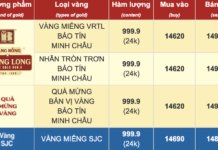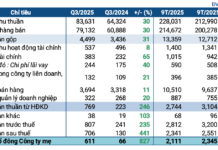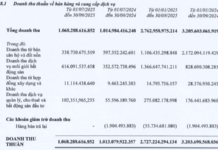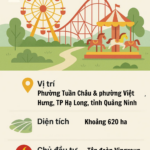
Image source: Internet
The Standing Committee of the National Assembly, headed by Chairman Tran Thanh Man, has issued Resolution No. 1278/NQ-UBTVQH15, dated November 14, 2024, regarding the rearrangement of Ho Chi Minh City’s communal-level administrative units for the 2023–2025 period.
Following the reorganization, Ho Chi Minh City will comprise 22 district-level administrative units, including 16 districts, 5 rural districts, and 1 city. The resolution will take effect on January 1, 2025, and the city will then have a total of 273 communal-level administrative units, consisting of 210 wards, 58 communes, and 5 townships.
As per the resolution, District 4 will undergo the reorganization of six communal-level administrative units: Wards 6, 8, 9, 10, 14, and 15, which will be merged in the following pairs:

Image source: Ho Chi Minh City People’s Committee
Ward 6, with an area of 0.2 km2 and a population of 31,169, will be merged into Ward 9. Post-merger, Ward 9 will span an area of 0.32 km2 and accommodate a population of 45,356 individuals. It will be bordered by Wards 2, 3, 4, 8, and 13, as well as District 1.
Ward 10, with an area of 0.11 km2 and a population of 10,428, will be merged into Ward 8, resulting in a post-merger area of 0.27 km2 and a population of 29,254. Ward 8 will share borders with Wards 4, 9, 13, and 15.
Ward 14, with an area of 0.17 km2 and a population of 18,339, will be merged into Ward 15. Following this merger, Ward 15 will cover an area of 0.39 km2 and be home to 36,913 individuals. It will border Wards 4, 8, 13, 16, and 18, as well as District 7.
Post-reorganization, District 4 will be reduced from 13 to 10 communal-level administrative units, namely Wards 1, 2, 3, 4, 8, 9, 13, 15, 16, and 18. Located in the southern part of Ho Chi Minh City, District 4 is the smallest district in Vietnam, spanning an area of 4.18 km2. According to the Provincial Statistical Yearbook, with a population density of 42,225 people/km2 in 2023, District 4 also boasts the highest population density in the country.
In addition to District 4, the resolution outlines that Districts 3, 5, 6, 8, and 11 will each comprise 10 wards following the reorganization of communal-level administrative units.
The Standing Committee of the National Assembly has entrusted the Government, the People’s Council, the People’s Committee of Ho Chi Minh City, and relevant agencies and organizations with the responsibility of implementing this resolution. This includes reorganizing local apparatuses, ensuring the stability of local residents’ lives, and promoting socio-economic development, national defense, and security in the area.
The Government has been tasked with directing relevant ministries and the Ho Chi Minh City administration to continue reviewing and compiling specific figures for administrative units that require rearrangement but have not yet undergone the process during the 2023–2025 period. They are also responsible for formulating plans and timelines to refine the necessary standards and conditions to facilitate future rearrangements in accordance with regulations.
The Council for Ethnic Affairs, the National Assembly’s committees, and the Ho Chi Minh City Delegation of National Assembly deputies are expected to monitor the implementation of this resolution within the scope of their duties and authority.
The Race to Launch Ho Chi Minh City’s First Metro Line
The ongoing dispute among contractors for the CP1a package (the underground section from Ben Thanh Station to the Opera House Station) of the metro line no. 1 remains unresolved. Ho Chi Minh City authorities are reporting the issue and seeking the Prime Minister’s guidance to facilitate a resolution. The aim is to ensure the first urban railway line in the city can commence commercial operations as scheduled on December 22nd.
The Art of Strategic Staffing: Navigating Organizational Streamlining
The Prime Minister has emphasized the importance of meticulous preparation in personnel planning, ensuring that the right people are in the right places with the right policies. This strategic approach is key to achieving a streamlined and effective government machine, where every cogwheel works in harmony towards a shared goal.










































